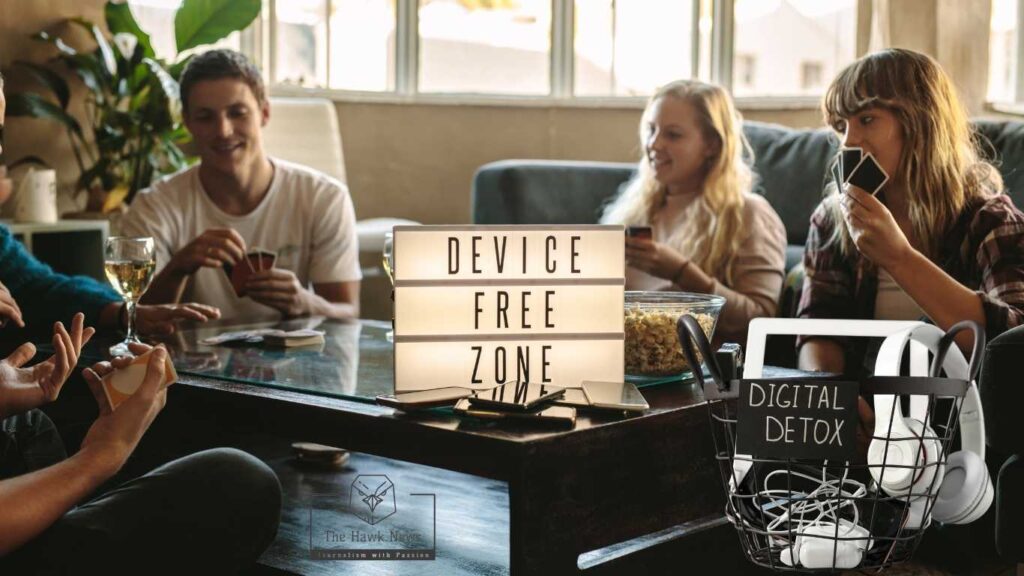
A Generation Ready to Log Off In an era dominated by likes, shares, reels, and stories, it’s surprising to see the most digitally native generation—Gen Z—leading the charge in logging off. Digital Detox 2.0 isn’t just a buzzword anymore; it’s a full-blown wellness revolution. With rising awareness about mental health and screen fatigue, Gen Z is redefining how to live well in a hyper-connected world by choosing intentional offline moments.
Why Gen Z Is Saying ‘Enough’ to Constant Connectivity Gen Z has grown up with technology in their pockets—from iPads in school to smartphones before high school. However, the toll of 24/7 connectivity is starting to show:
- Mental Fatigue: Endless scrolling has been linked to anxiety, depression, and reduced attention span.
- Sleep Disruption: The blue light from screens, coupled with social media FOMO, disrupts sleep cycles.
- Dopamine Dependence: Notifications trigger dopamine responses that can mimic addiction.
But unlike earlier generations, Gen Z isn’t ignoring these signs—they’re taking action.
Digital Detox 2.0: What It Really Means Digital Detox 2.0 isn’t about throwing away your phone and moving to the mountains (though some have tried!). It’s a more realistic, sustainable approach that includes:
- Screen-Free Sundays: A popular trend where people avoid screens for an entire day.
- Mindful Usage: Apps like Forest and One Sec help users pause before opening social media.
- Offline Retreats: Wellness centers are now offering tech-free weekends focused on yoga, nature, and journaling.
Offline Is the New Luxury: The Rise of Mindful Living As luxury shifts from material possessions to peace of mind, Gen Z sees offline time as a premium experience:
- Reading Physical Books: The tactile joy of paper is making a comeback.
- Analog Hobbies: From crocheting to gardening, hands-on activities are trendy again.
- In-Person Socializing: Picnics, game nights, and potlucks are replacing Zoom hangouts.
Social Media Cleanse: Trend or Transformation? The hashtag #DigitalDetox has over 700 million views on TikTok and Instagram, signaling this is more than just a phase. Influencers and micro-creators are:
- Posting less frequently.
- Sharing unfiltered, authentic content.
- Using their platform to talk about screen-time balance.
The Role of Brands and Tech Companies Brands are catching on to this trend, and not just wellness brands:
- Apple and Google now have built-in screen-time monitoring features.
- Beauty and fashion brands promote “Offline Aesthetics”—think cozy clothes and calm colors.
- Hotels and travel agencies are offering “No Wi-Fi” packages.
Challenges of Going Offline Despite the movement, a full digital detox isn’t always easy:
- Academic and Work Pressure: Online classes and remote jobs require constant screen time.
- Social Expectations: Not responding instantly can be seen as rude or unprofessional.
- Fear of Missing Out (FOMO): Social updates are still a major pull.
Tips for a Successful Digital Detox If you’re inspired to take a page out of Gen Z’s detox playbook, here are practical steps:
- Set app limits using your phone’s settings.
- Schedule offline hours—especially before bed and after waking.
- Replace screen time with physical activities.
- Tell your circle—setting expectations helps reduce social pressure.
Conclusion: The Future Is Balanced, Not Binary Gen Z isn’t anti-tech—they’re pro-balance. They recognize the benefits of the digital world but are bold enough to prioritize their mental wellness. As this movement grows, expect more innovations, community spaces, and brands aligned with the ethos of mindful digital living.
Digital Detox 2.0 is not just a reset—it’s a reimagination of what it means to live well.
And Gen Z is showing us how it’s done!!